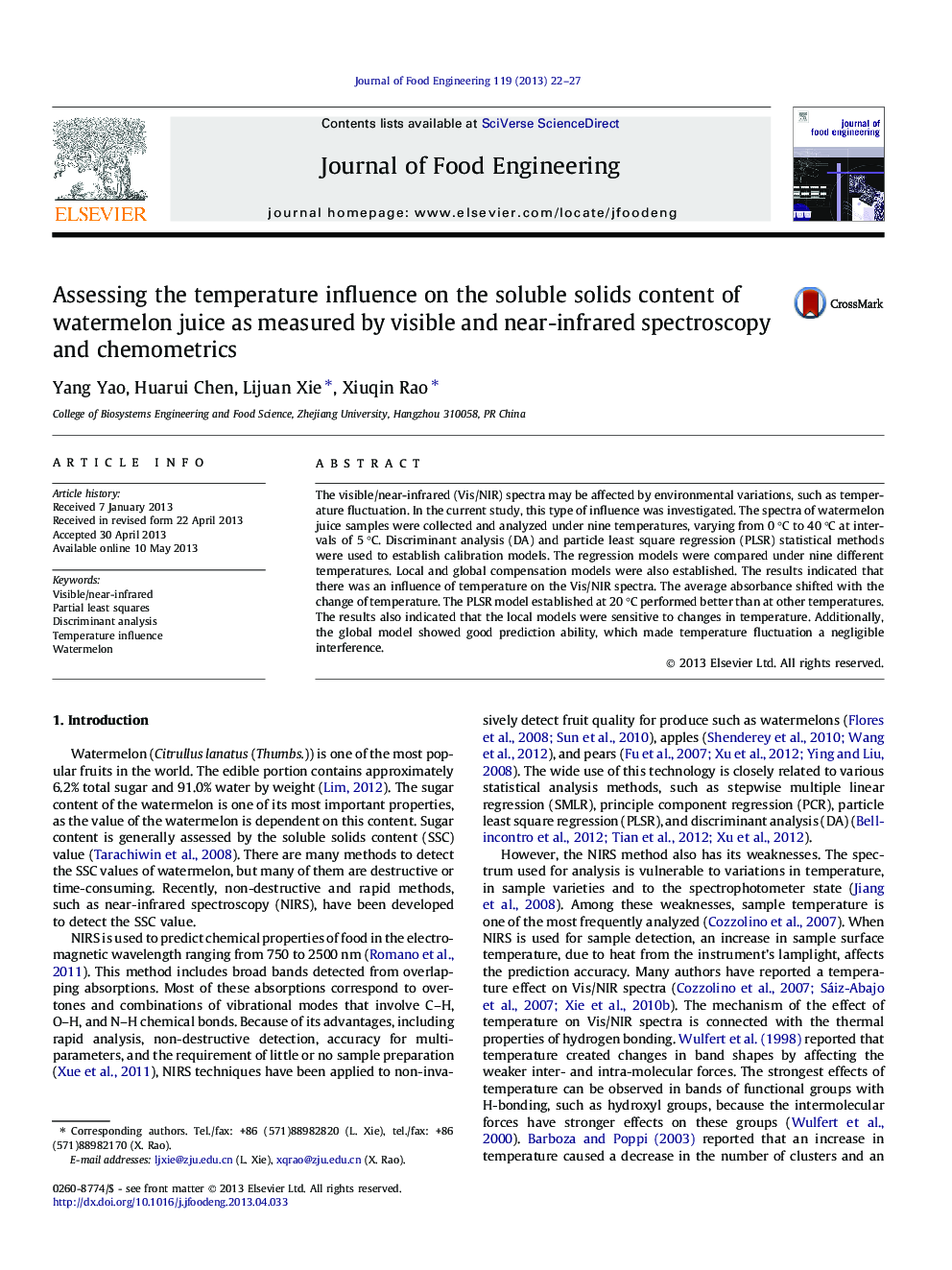| Article ID | Journal | Published Year | Pages | File Type |
|---|---|---|---|---|
| 10277439 | Journal of Food Engineering | 2013 | 6 Pages |
Abstract
The visible/near-infrared (Vis/NIR) spectra may be affected by environmental variations, such as temperature fluctuation. In the current study, this type of influence was investigated. The spectra of watermelon juice samples were collected and analyzed under nine temperatures, varying from 0 °C to 40 °C at intervals of 5 °C. Discriminant analysis (DA) and particle least square regression (PLSR) statistical methods were used to establish calibration models. The regression models were compared under nine different temperatures. Local and global compensation models were also established. The results indicated that there was an influence of temperature on the Vis/NIR spectra. The average absorbance shifted with the change of temperature. The PLSR model established at 20 °C performed better than at other temperatures. The results also indicated that the local models were sensitive to changes in temperature. Additionally, the global model showed good prediction ability, which made temperature fluctuation a negligible interference.
Related Topics
Physical Sciences and Engineering
Chemical Engineering
Chemical Engineering (General)
Authors
Yang Yao, Huarui Chen, Lijuan Xie, Xiuqin Rao,
